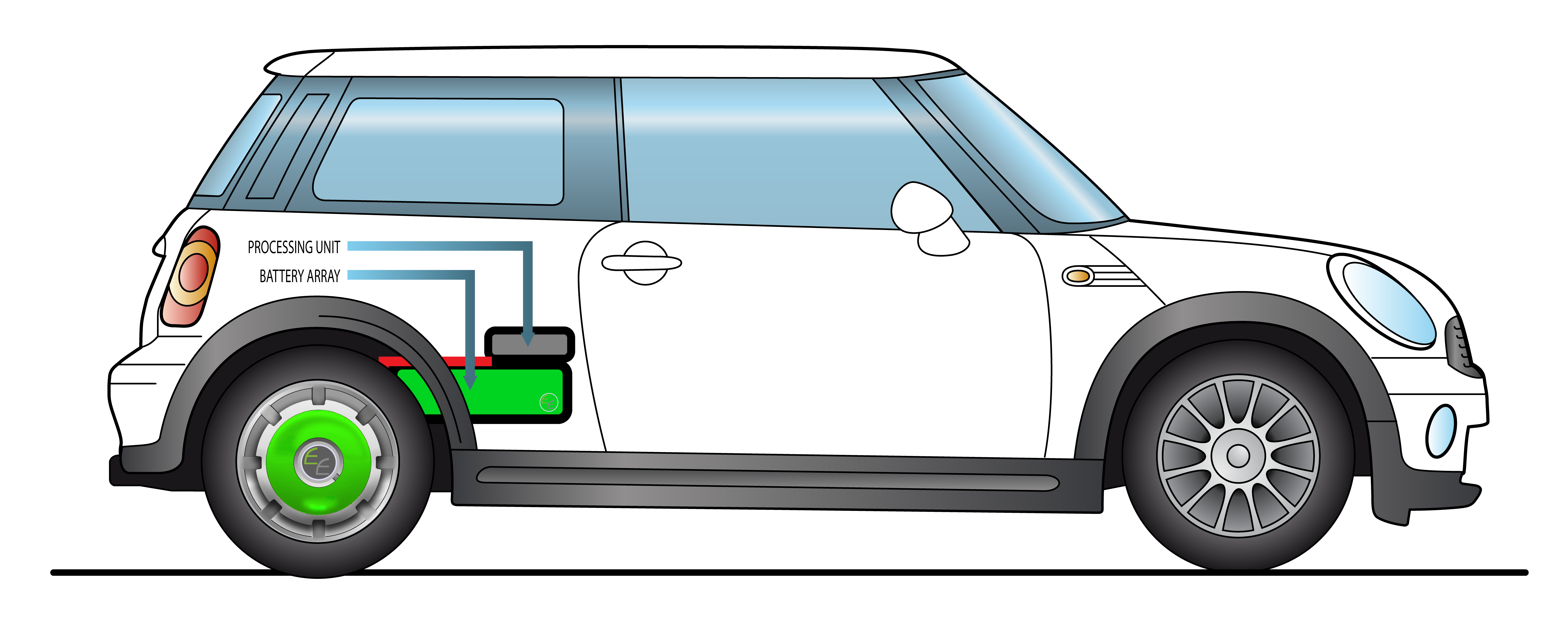As we become more concerned about the environment and energy efficiency, hybrid vehicles begin to look more and more attractive. They seem like the best of both worlds: they combine a gas engine’s efficiency at high speeds with an electric motor’s suitability for city driving. In fact, easily the biggest problem with a hybrid vehicle is that it’s not the one you already own.
Any new car is a significant investment, and hybrids tend to be more expensive than standard cars. In some cases the increased energy efficiency may not be enough to make a hybrid financially worthwhile. This is why hybrids have largely been relegated to large corporate fleets or personal vehicles for people who feel strongly about the environment and have enough money to act on that feeling.
Simon Burns, a young entrepreneur and U of M student, is hoping to change that with his latest project. It is called Elapse Electric, and the idea is to develop a conversion kit that can turn almost any car into a plug-in hybrid by adding electric motors to the wheels.
“There’s a technology that’s been developed in the last 18-24 months called thin-wafer electric motors,” said Burns.
“A few years ago they used to be six inches in width, and in the last 18-24 months they’ve come down to where they’re about two to three inches. So if you put a thin-wafer electric motor on each wheel [ . . . ] you’re now going straight to the wheel [ . . . ] so you don’t lose any efficiency to the drive train.”
The idea of mounting an electric motor on the wheel is nothing new. Albert L. Parcelle of the Florence Motor Company filed for a patent on the technology in 1889. More recently, Charles Perry, an engineering professor at Middle Tennessee State University, has been developing a wheel-mounted apparatus that will add hybrid capabilities to a car without changing anything mechanical. Perry was discussing the possibility of commercializing the project in 2012, though it is not clear what has happened to the project since then.
A previous project in Connecticut failed to gain traction. Its wheel mounts were large and indiscreet.
“They had a torque wheel that looked really unattractive [ . . . ] As it was going you had this massive torque arm that was spinning [ . . . ] Clearly that’s not aesthetically pleasing,” said Burns.
“They do have some good technological components but this is three or four years ago, when you still had that huge extrusion.”
Elapse Electric has a predecessor of sorts in the Plug-in Electric Transporter (PET) project, which was designed by U of M student Derek Neufeld.
“It was a sort of similar system using a trailer behind the car,” said Burns. “That was because you had such thick motors so you couldn’t exactly wheel-mount them as we’re doing it now.”
The PET project was supervised by U of M engineering professor Eric Bibeau. Bibeau, an expert in electric propulsion and renewable energy, is acting as a consultant to Elapse Electric.
The project is in the early stages. No prototype has been built yet. Burns is still in the process of making a business case for Elapse Electric. According to Burns, they’re about to be funded. “Following that we should be making a digital prototype with CAD systems and then we’ll be moving to a physical prototype. Eric Bibeau is planning to lead that.”
“We’ve been talking to Canadian alternative energy players to build partnerships. Once we’ve had one major partnership, we’re looking to go forward with grants [ . . . ] Once we have patents on it we’re looking at presenting it more broadly at conferences.”
The collaboration between Burns and Bibeau began in January of this year. Burns drew up a business plan for Elapse Electric and presented it twice – winning the Wes Nicol Business Plan Competition and taking second place at the Young Presidents’ Organization competition. Burns’ presentation compares Elapse Electric to several businesses that would be competitors.
“They want to see competitors. There’s always the idea that if you don’t have any competitors, you haven’t done your research. There’s always competitors out there.”
But as far as Burns knows, there is currently no available service that does aftermarket hybrid conversion for any vehicle. All the competitors listed do full-electric conversions, which are more expensive, add a good deal of weight to the vehicle, and take away the car’s warranty.
“There is [aftermarket conversion] specifically for Priuses or a car that’s already a hybrid, if you want to add battery power or make it a plug-in—because some of them aren’t plug-ins—they will do that but, again, it’s around $15,000.”
“When you look at alternative energy technologies, there’s a short-term state of ambiguity where people at one end are saying electric cars are not feasible at all, and some people are adamant that electric cars are the way to go. And there are even people talking about hybrids, talking about hydrogen vehicles.”
“Nobody knows which technology is going to come to the fore,” said Burns. “We think [plug-in hybrids are] the perfect combination, especially for North American consumers. We don’t believe the other options are quite as feasible. [ . . . ] We want to elapse this period of ambiguity and come out as the dominant technology in the new alternative energy market.”
When asked about the future, Burns seems optimistic. About the rise of self-driving cars, he says, “it’s sort of like comparing the hardware of the computer to the operating system.”
“I’m really looking forward to cool new operating systems for cars, but at the end of the day, if they don’t have the hardware to make it – I mean an autonomous vehicle that’s gasoline powered in a Hummer is not something I’m too excited about.”
The purpose of a hybrid conversion kit is to act as a stopgap between the era of gas-powered cars and the era of ubiquitous hybrids (if that is indeed where the market is going). If Elapse Electric is successful, it will eventually render itself unnecessary. Asked about this, Burns said that his research indicated that the fleet renewal process will take around 50 years, so the market will still be around for a while.
“Say 20 years out the majority of the cars on the road are electric and costs have come down. Well, I think then that state of ambiguity will have elapsed, right? This is supposed to trigger a movement toward electric.”



